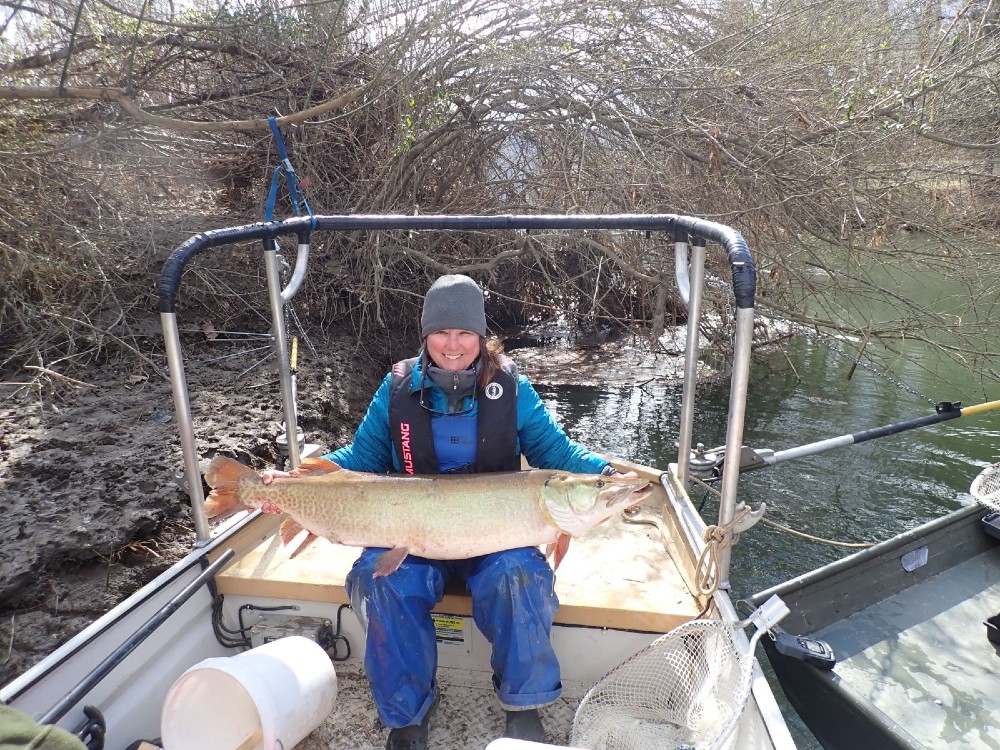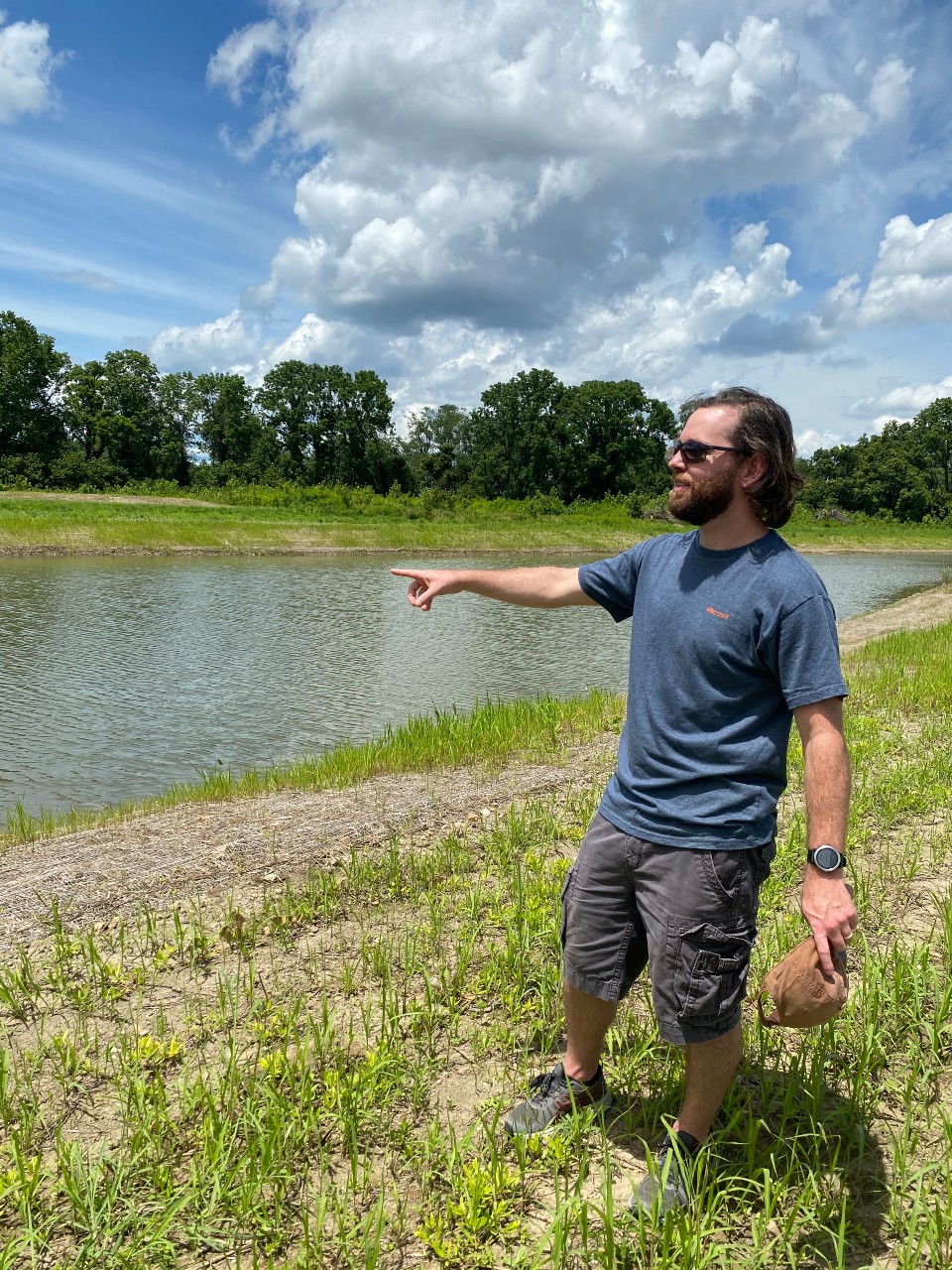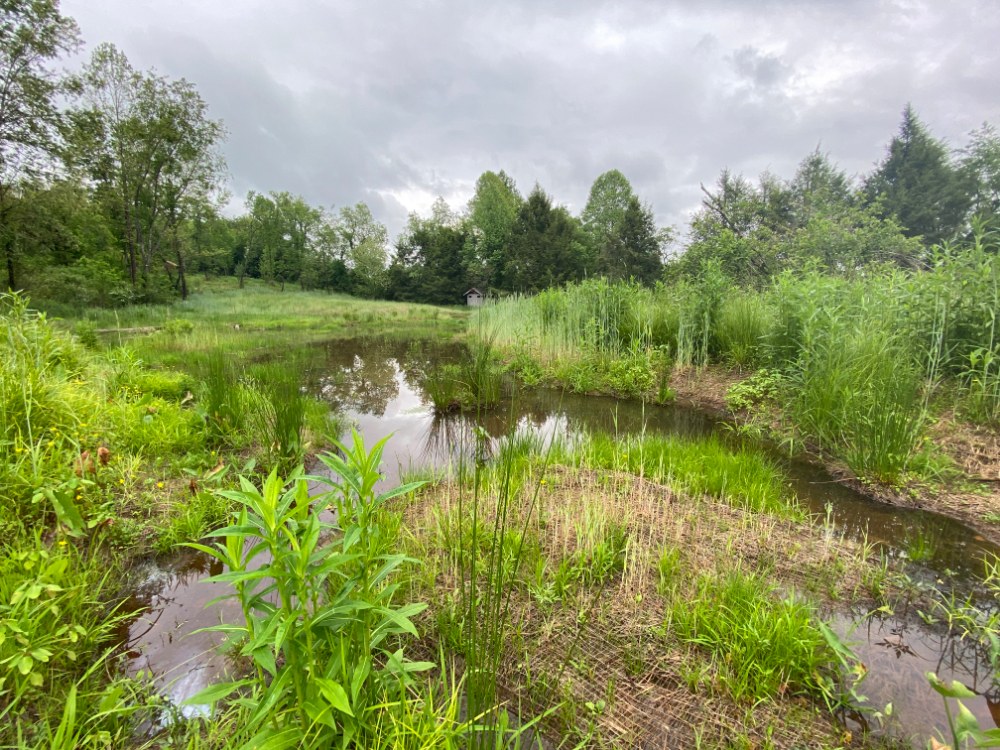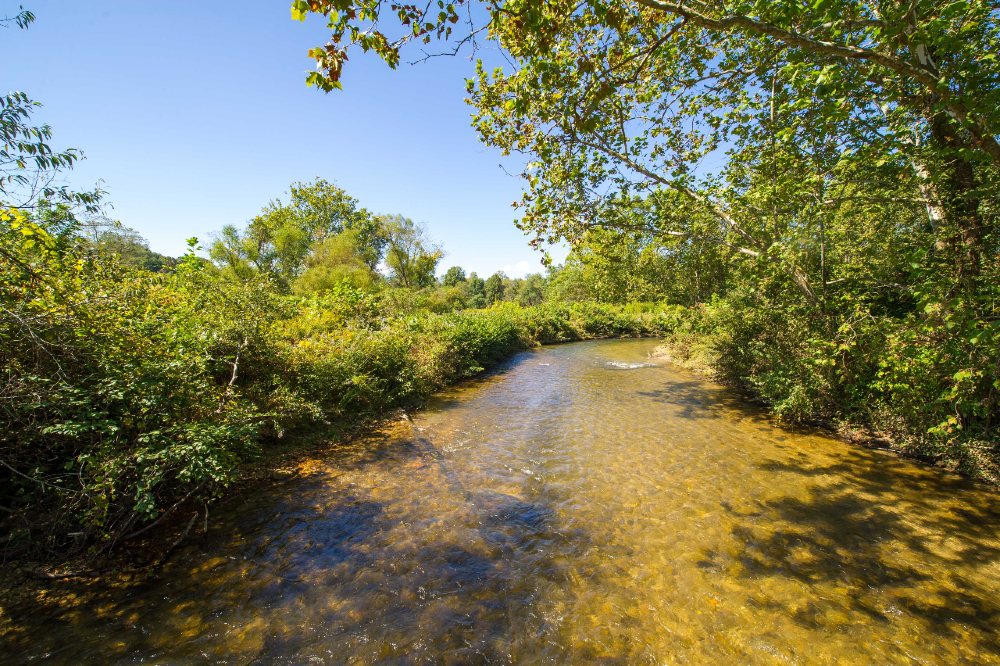Restoring Life Along the River

This fall, the first muskie swam into a new backwater pool connected to the French Broad River. It was one of three pools, called sloughs, that were recently excavated beside the river as places for muskie to breed. Muskie—or muskellunge, to use their full name—are the largest fish native to the French Broad River. They can grow up to four feet long and are a prized, hard-to-get catch for anglers.
These giant fish belong in the French Broad River, but they nearly died out when the river was more polluted. They were reintroduced, but the stocked fish aren’t reproducing. Biologists with the N.C. Wildlife Resources Commission have a theory as to why: the river flows too fast.
In its natural state, the river would spread into sloughs and wetlands and spill over its floodplain. But, today, the water and the land have been separated. Ditches and berms were built to keep the river in a narrow channel, where the current is strong. Many species, including muskie, seek out calmer, slow-moving waters to shelter, find food, and breed.
Related: Biologist Scott Loftis talks about “What the River Wants”
Comeback for the Floodplain
That raised the question: Can we bring back something that we’ve lost? Can we recreate the kind of natural floodplain that supports abundant life?
When 103 acres of flood-prone farmland came up for sale in Mills River, on the French Broad at the mouth of Mud Creek, we had the opportunity to try. Conserving Carolina purchased the property and for several years, with multiple partners, we’ve been undertaking an ambitious floodplain restoration.
This summer, we completed the restoration. It includes three new muskie sloughs (pronounced “slews”), three acres of wetlands, reforestation along the river, and a wildflower meadow. We removed rampant invasive plants and replanted the land in diverse native species.

Scientists track the movements of muskie, which is how we know that at least ten muskie have started using the sloughs—including some who traveled 20 miles to get there! Many other creatures have been spotted at the Mouth of Mud Creek as well. Like otters, deer, racoons, coyotes, dragonflies, bats, osprey, and many kinds of birds. More frogs, turtles, and salamanders are all expected to move into the new wetlands.
The restoration brings important benefits for people as well. The land absorbs water and filters it as it runs toward the French Broad, improving our water quality. It also holds stormwater that would otherwise rush downstream in destructive floods. The site includes a paddle campground and a potential expansion of the Oklawaha Greenway.
David Lee, our Natural Resources and Trails Manager, says, “With this restoration, we’re thinking holistically about the larger ecological process and all of the benefits for wildlife and people that come from a natural floodplain. It’s a model that we’re already replicating at other sites along the French Broad River.”

Uncovering a Buried Wetland
Another recent restoration took place at Carolina Memorial Sanctuary, a conservation burial ground that we helped protect in Mills River. The sanctuary is located on a tributary of the French Broad River. When we started there, the grounds were abandoned farm fields overrun with invasive plants. But soil studies suggested that part of the site had once been a wetland. It looked like, at some point, the wetland had been covered with 16 inches of fill dirt.
The restoration involved removing invasive plants, planting natives, and regrading steep, eroded streambanks. But, for contractor Sean Moore, the most exciting part was removing the soil over what could be a buried treasure—the former wetland. Sure enough, as his excavator dug into the hillside, a spring started gushing out of the bank, like a hose. The basin he was digging filled up with water.
And, very soon, plants and animals began to appear. Wetland plants sprang up, possibly from seeds that had been buried for nearly a century! Wood frogs, swallows, mallards, and salamanders all arrived in the first few months. Cassie Barrett, who helps run the sanctuary, says that love is healing the land—both love from the burials and from the restoration.
Related: “New Life in the Cemetery”

Big Picture Vision for the French Broad River
Further upstream, on the East Fork of the French Broad, near Rosman, we recently completed improvements to a restoration from 2016. We worked with musician Woody Platt of Steep Canyon Rangers and his wife Shannon Whitworth on one side of the river and landowners Lois and Carl Ganner on the other side. Here, the riverbanks used to be 10-foot tall cliffs that would collapse and dump sediment into the river.
Conserving Carolina managed a project to regrade the banks and add underwater features that provide shelter for animals. During a site tour this fall, the water was running crystal clear—a good home for brook trout and hellbender salamanders. Monarch butterflies were gathering nectar from wildflowers along the banks, and trees were growing up to shade and cool the stream.
Looking forward, we’re planning another floodplain restoration at our Pleasant Grove property in Etowah. And we’re in the process of acquiring a potential restoration site in Fletcher. Both are located on the French Broad River.
Together, projects like these could make a real difference for our region’s largest waterway. And this fall, we were awarded a planning grant to chart a vision for floodplains in the Upper French Broad River. With your support, we are changing the French Broad River for the better—providing cleaner water, reducing flood damage, and supporting more life. Thank you!
